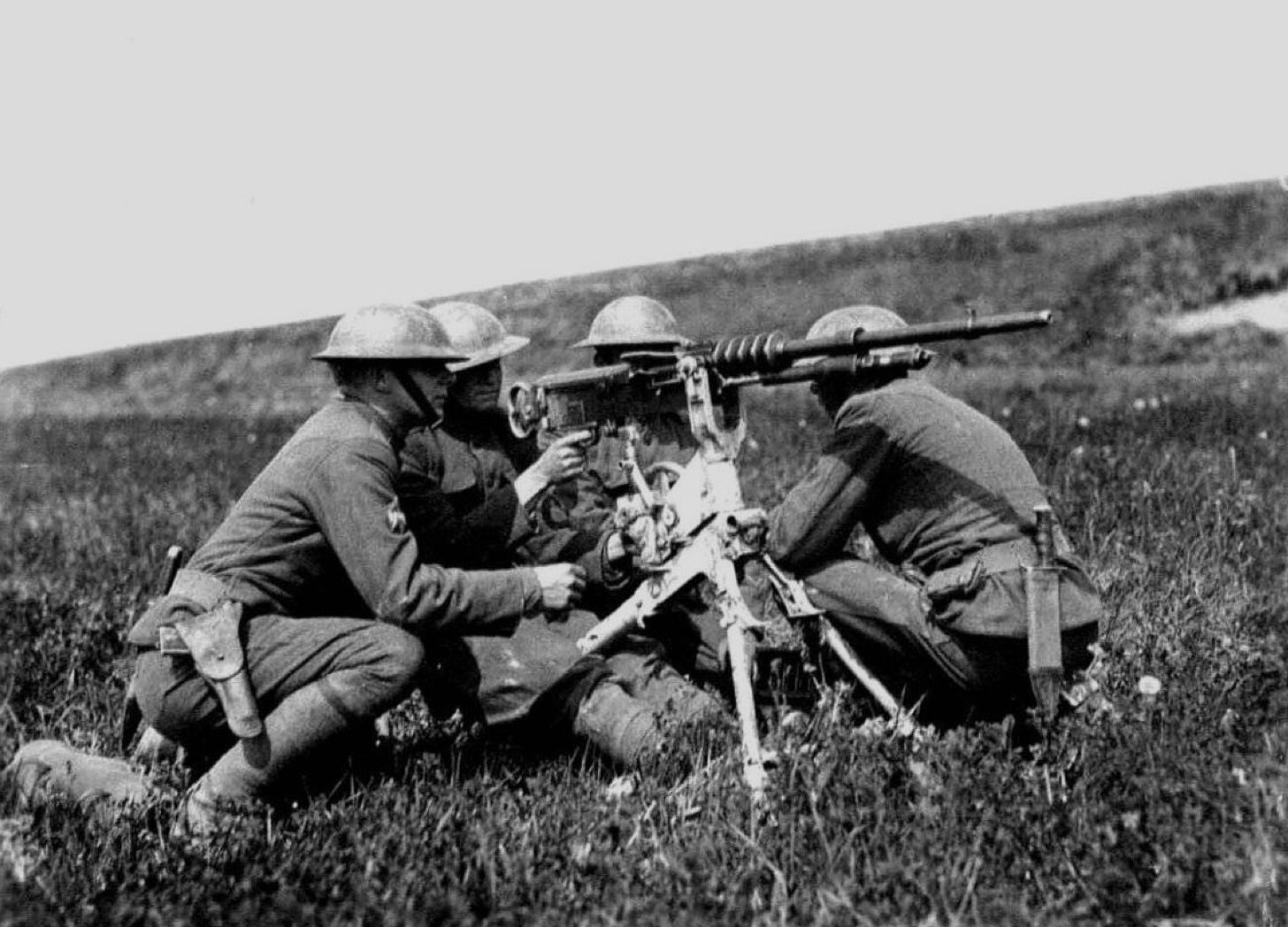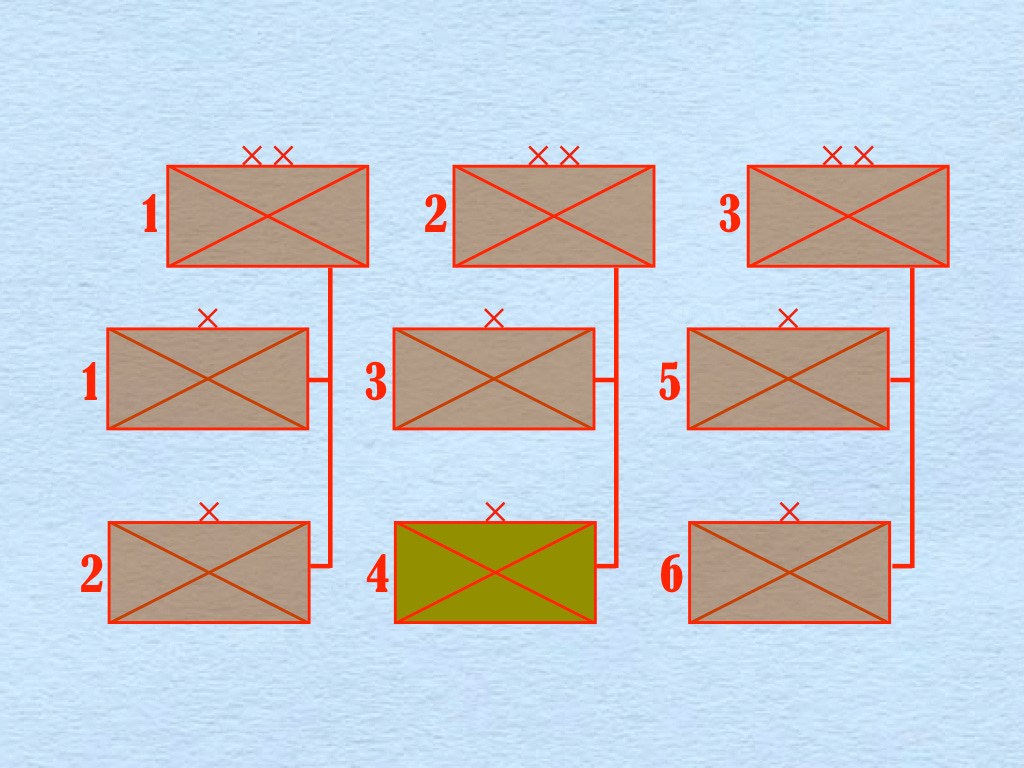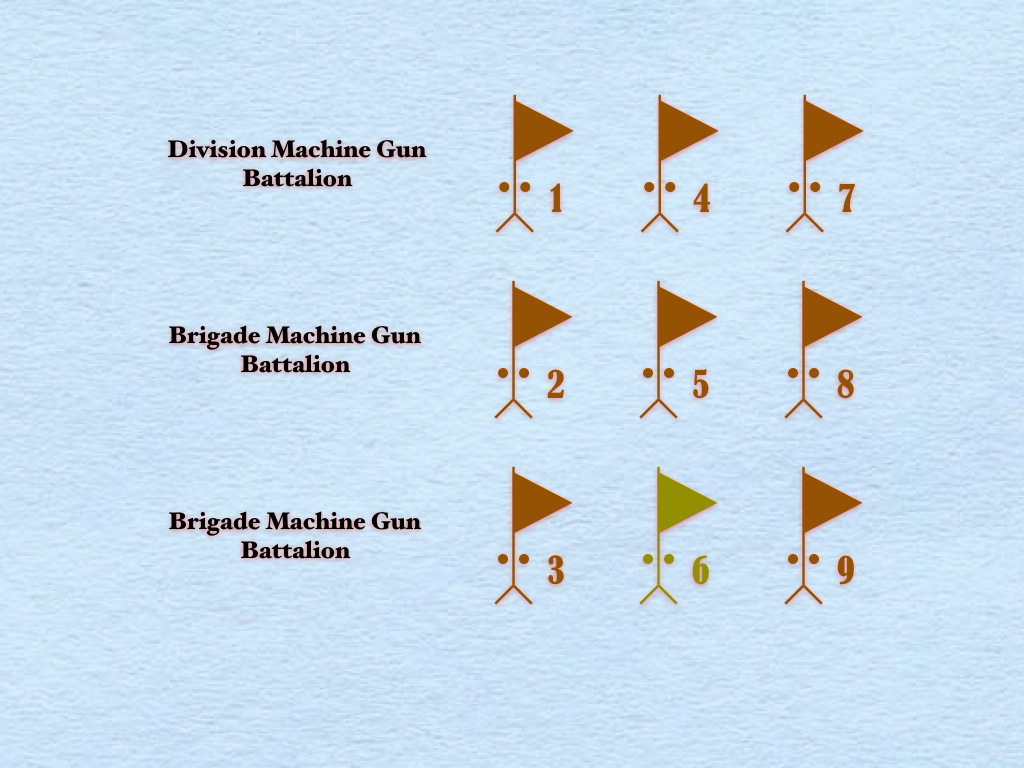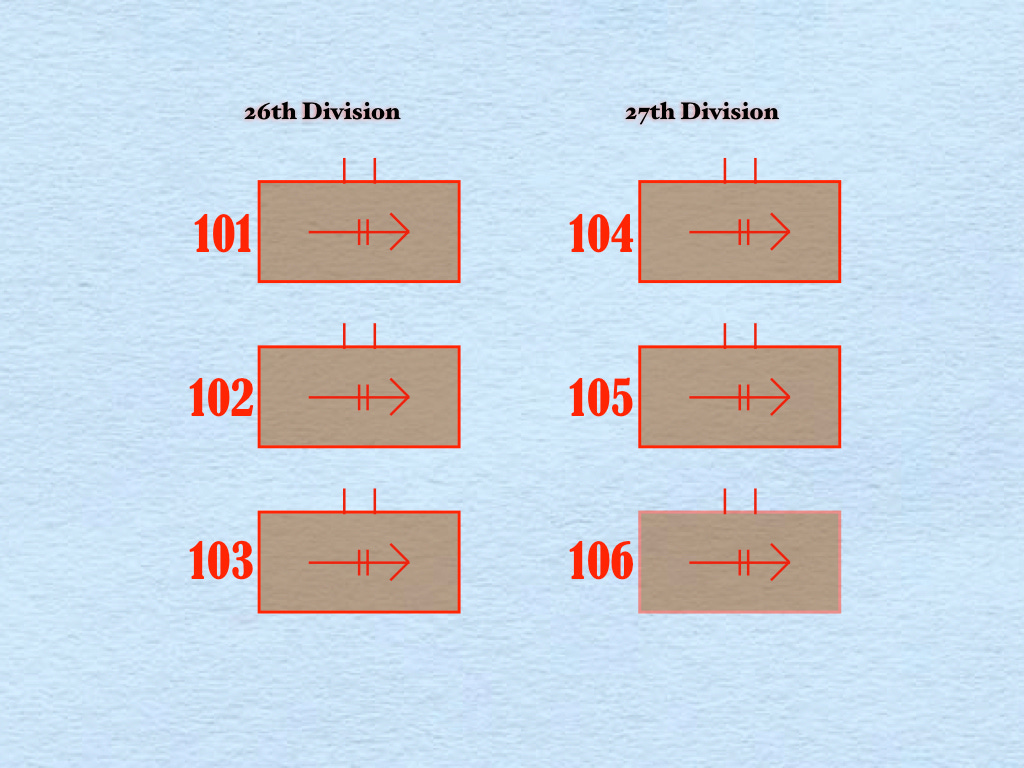AEF Machine Gun Battalions (1917-1918)
The Logic Behind the Numbers
Many of the infantry regiments of the American Expeditionary Forces (AEF) of the First World War had existed prior to 1917. The brigades and divisions to which they were assigned, however, were entirely new. Thus, as is often the case with new formations, they were numbered in what might be called “synchronized series.” Thus, the two infantry brigades of the 1st Division bore the numbers “one” and “two.”
The junior brigade of the 2nd Division was composed largely of units provided by the United States Marine Corps. Thus, while it was not the fourth in a series of brigades formed by the Marine Corps, it became known as the “4th Marine Brigade.”
Each of the infantry divisions of the AEF was provided with three machine gun battalion. Modeled on the machine gun battalions then being formed by the armies of the British Empire, these units were optimized for the task of using indirect fire to place barrages of bullets behind enemy positions, thereby inhibiting movement.
The senior of the three machine gun battalions, which was (at least in theory) provided with motorized transport, belonged to the division as a whole. The other two were assigned, at a rate of one per brigade, to each infantry brigade.
As the machine gun battalions were as new as the brigades and divisions to which they were assigned, they were numbered in series that were synchronized with the numbers of their parent formations. In divisions with numbers running from “one” to “twenty,” the series began with the number “one.” Thus, the machine gun battalions of the 2nd Division bore the numbers “four,” “five,” and “six.”
Thanks to this scheme, the machine gun battalion of the 4th Marine Brigade, which was then the only machine gun battalion in the Marine Corps, received the number “six.” (The two infantry regiments of the 4th Marine Brigade, the 5th Marines and the 6th Marines, existed before the creation of the AEF. Thus, their numbers reflected their relationship to other infantry regiments of the Marine Corps, not their relationship to the AEF.)
The numbering of machine gun battalions of the AEF was complicated by the use of a different series for machine gun battalions assigned to divisions formed largely from units provided by the National Guard. Part of a larger scheme to provide predictable numbers to all component units of these divisions, this new series began with the number “one hundred and one.”
The senior machine gun battalion of the new series, which served as the divisional machine gun battalion of the senior National Guard division of the AEF (the 26th Division) was thus the 101st Machine Gun Battalion. It shared this number with the engineer regiment, signal battalion, and trench mortar battery of the division, as well as the senior infantry and field artillery regiments, not to mention each of the five ammunition battalions of the division trains.
While the series of numbers assigned to the component units of National Guard divisions were synchronized with each other, they were not always in parallel. Thus, a unit bearing the number “one hundred and two” might be the 102nd Machine Gun Battalion of the 26th Division or the 102nd Engineer Regiment of the 27th Division.
There was, moreover, no simple arithmetic relationship between the number of a National Guard division and its machine gun battalions. (Dividing the number of 102nd Machine Gun Battalion by two yielded “fifty-one,” which happened to be the number of the infantry brigade to which it was assigned. However, halving the number of the 106th Machine Gun Battalion resulted in a number other than that of its parent brigade, the 54th Infantry Brigade.)
Further complication came in the form of the use of a third series of numbers for the component units of the National Army divisions of the AEF. Composed entirely of units created after the entry of the United States into the First World War, these divisions used numbers from a set of synchronized series that began with the number “three hundred and one.” Thus, the divisional machine gun battalion of the senior National Army division (the 76th Division) was the 301st Machine Gun Battalion.
Source: United States Army Center of Military History, Order of Battle of the United States Ground Forces in the World War, Volume 2, American Expeditionary Forces: Divisions, (Washington: Government Printing Office, 1931)
For Further Reading:
To Share, Support, or Subscribe:











